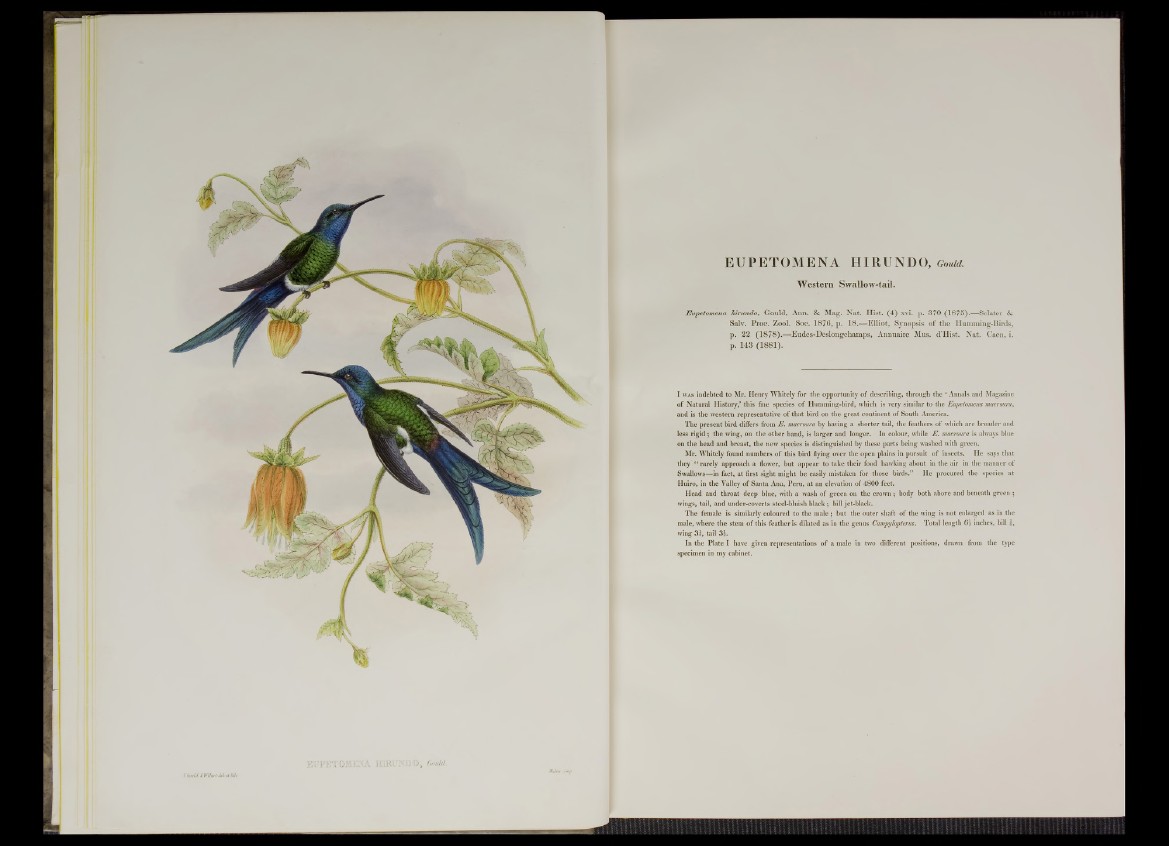
EUPETOMENA HIRUNDO, Gould.
Western Swallow-tail.
Eupetomena hirundo, Gould, Ann. & Mag. N a t. H ist. ( 4 ) xvi. p. 3 7 0 (1 8 7 5 ).— Sclater &
Salv. Proc. Zool. Soc. 1 8 7 6 , p. 18.-—E llio t, Synopsis o f the Humming-Birds,
p. 2 2 (1 8 7 8 ) .— Eu des-Deslongchamps, Annuaire Mus. d ’H ist. Nat. Caen, i.
p. 1 4 3 (1 8 8 1 ).
I w a s indebted to Mr. Henry Whitely for the opportunity of describing, through the ‘ Annals and Magazine
of Natural History,’ this fine species o f Humming-bird, which is very similar to the Eupetomena macroura,
and is the western representative o f that bird on the great continent of South America.
The present bird differs from E . macroura by having a shorter tail, the feathers of which are broader and
less rigid; the wing, on the other hand, is larger and longer. In colour, while E . macroura is always blue
on the head and breast, the new species is distinguished by these parts being washed with green.
Mr. Whitely found numbers of this bird flying over the open plains in pursuit o f insects. He says that
they “ rarely approach a flower, but appear to take their food hawking about in the air in the manner of
Swallows—in fact, at first sight might be easily mistaken for those birds.” He procured the species at
Huiro, in the Valley o f Santa Ana, Peru, at an elevation of 4800 feet.
Head and throat deep blue, with a wash of green on the crown ; body both above and beneath green ;
wings, tail, and under-coverts steel-bluish black; hill jet-black.
The female is similarly coloured to the male; but the outer shaft of the wing is not enlarged as in the
male, where the stem o f this feather is dilated as in the genus Campylopterus. Total length 61 inches, bill f,
wing 31, tail 31.
In the Plate I have given representations o f a male in two different positions, drawn from the type
specimen in my cabinet.